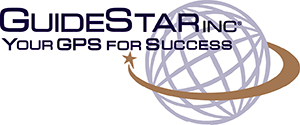Leadership. Knowledge. Execution.
All Three In Alignment Strengthen Your Organization Like Never Before.
Performance Excellence seeks to consistently meet or exceed expected results for service, growth, and profitability.
It stems from having everyone within an enterprise fully aligned with the organization’s purpose, i.e., Vision, Mission, Values, and Goal, and through which everyone within the organization benefits, gains, and strengthens their commitment and KASH (Knowledge, Abilities, Skills, and Habits) to make a difference in outcomes, both personally and professionally.
It’s So Much More Than A State Of Mind.
Performance Excellence is the underlying operating philosophy, grounded in the distinct dimensions of Leadership, Knowledge, and Execution that underpin innovation, productivity, and growth, from both individual and organizational perspectives.
The following short video outlines how achieving Performance Excellence is a journey that reflects the stages of business development, initially described by Tang and Bauer[i] and expanded by Thompson, Benedetto, Walter, and Meyer.[ii]
The maturity of an organization in integrating the three dimensions (vectors) depends on how organizational leaders consciously develop, nurture, promote, strengthen and reinforce key attributes of each dimension that build the right culture for innovation and growth. Each of the following videos explains each vector in more detail.
Leadership requires understanding and applying the principles of emotionally intelligent and transformational leadership.
Knowledge requires the operating principles of transparency throughout a company as well as collaboration, which is shared creation.
Execution presents two key practices – Teamwork (versus group work) and mindfulness – through which individuals and teams innovate and perform better collectively.
These six key attributes and practices are discussed in greater detail within Chapter 8 of The Story of the Character-based Car Company[i], which is a foundational resource for GuideStar’s Character-based Capitalism Programs.
Employee Engagement is Not Enough
Buchanan[ii] defined employee engagement as “the extent to which workers commit themselves to something or someone in their organization” (p. 19) and described two types of commitment: Rational commitment exists when a job serves an employee’s financial, developmental, or professional self-interest versus Emotional commitment where a worker values, enjoys, and believes in what they do. Current Gallup data[iii] indicate that only 31% of US employees are “engaged” within their workplaces. The converse statistic is more troublesome: Over two-thirds of employees are disengaged-a disastrous statistic to say the least!
Buchanan noted that increased commitment can yield a 57% improvement in discretionary effort, i.e., the willingness to exceed duty’s call, with an improvement of 20% in individual performance and an 87% reduction in the desire to leave. These results do not come through higher pay or benefits, which is consistent with Herzberg’s classic Motivation and Hygiene factors.,[iv] but rather:
- Letting employees know how important they are to business success.
- Giving employees multiple opportunities to contribute.
- Helping employees believe in their worth/value as well as the credibility of the organization.
Having the right leadership and the right culture are important but not sufficient for organizational success. Our research into eight high-performing companies, all of which are featured in the book “It’s My Company TOO!” showed that the zenith of Performance Excellence requires more than engaging employees; It entails “entanglement.”
Think of each employee as a single wire within a company. How strong is he or she when standing alone? What if you wound all those individual wires together and compressed them, binding them so tightly like a suspension bridge cable to be capable of supporting millions of tons that cross that bridge daily. Employee engagement is like those individual wires, with INDIVIDUAL decisions to act in certain ways, but “entanglement” is like that huge suspension cable, with employees so tightly bound together and aligned on organizational purpose that the strength of their collective performance is almost incalculable. That’s what entanglement looks like.
Entanglement is a CULTURAL PHENOMENON where delighted customers, increased efficiencies and productivity, and superior employee and customer satisfaction are the norm. In “entangled” organizations, leaders cultivate discretionary thinking, which motivates employees to continually give their best innovative efforts that result in market leadership.
Olympians versus College Athletes
Research revealed that entangled employees are like Olympians versus college athletes because they interlace and discipline all aspects of life with their quest for “gold.” Within entangled cultures, collective decision-making is focused on gaining the best possible result through collaborative leadership. While “average” employees use a small fraction of their mental processing capacity for work, entangled employees allocate and direct more of their discretionary thinking toward vexing organizational challenges, thinking past the requirements of their position to ways that help the organization achieve optimal performance. Thus, entanglement becomes a distinctive competence that makes imitation impossible and competitors irrelevant.
Where is the proof that supports this premise?
All organizations studied were recognized for positive work environments through various organizations, such as the Malcolm Baldrige National Quality Award, Best Places to Work, the Better Business Bureau Torch Award for Excellence in Ethics, and national and regional industry organizations. The eight entangled organizations in Thompson et al. span multiple industries- construction, project management, manufacturing, distribution, service, non-profit community service and health care. They range in size from less than 50 to several thousand employees or associates.
Shared Features of Entangled Cultures
The eight high-performing companies in our research shared the following:
- Brilliant leadership and a leadership system to create an exciting workplace.
- Leaders merged discretionary thinking with the best of what employees have to offer.
- Entangled employees at all levels successfully addressed problems that others face and aspire to overcome but fall short in execution.
- Positive caring and the desire to do the job right every time.
The bottom line: Entanglement is the “magic sauce” of Performance Excellence. It resides where Leadership, Knowledge, and Execution are fully integrated such that all organizational elements work in total harmony. Learn more about entangled organizations by clicking here.
